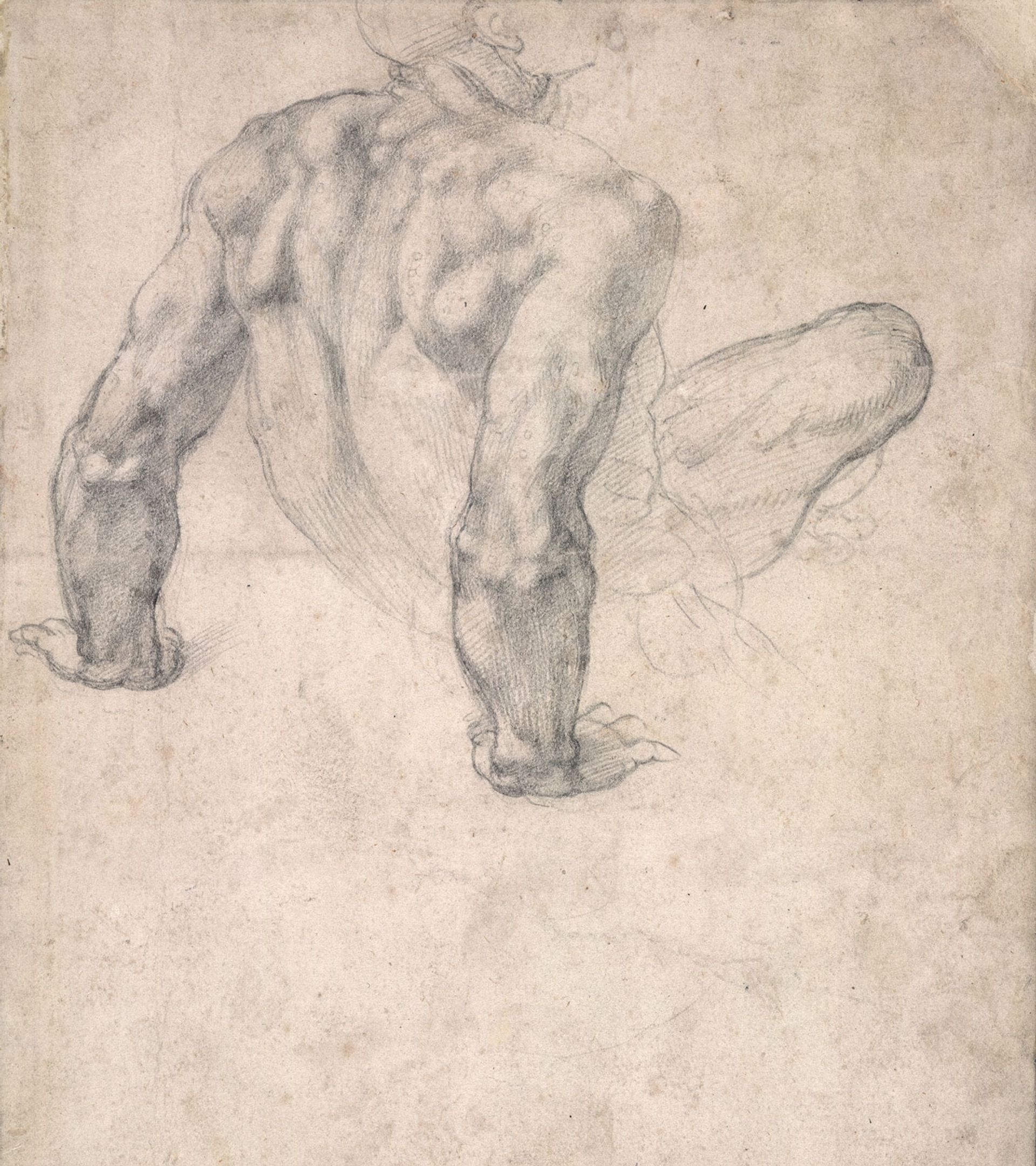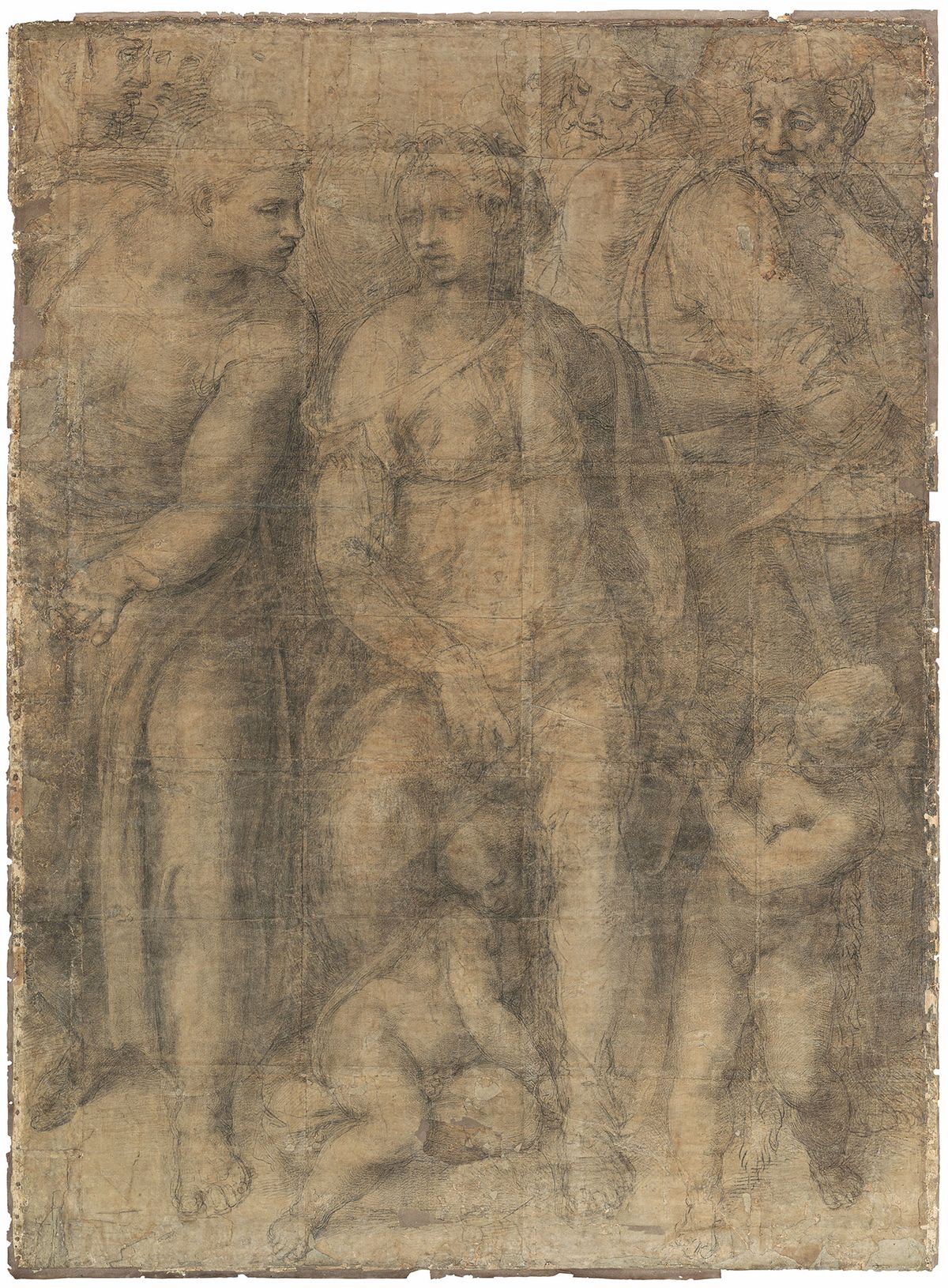The only complete surviving cartoon by Michelangelo will go on show in an exhibition opening at the British Museum this spring (Michelangelo: the last decades, 2 May to 28 July), focused on the final 30 years of the Renaissance master's life. The show aims to switch attention away from his youthful period of production, throwing light on works made in the years leading up to his death at 88 in 1564.
The cartoon Epifania (about 1550–53), a full-scale preparatory drawing which stands over two metres high, was executed on 26 sheets of paper; it will be displayed for the first time since its extensive conservation which began in 2018.
According to a text by Daniel Godfrey published on the British Museum website, Epifania was made in the early 1550s to “aid Michelangelo’s biographer Ascanio Condivi (c. 1525-74) in the production of a panel painting which survives, unfinished, in the Casa Buonarroti in Florence”. Condivi’s work, loaned from Casa Buonarroti in Florence, the museum dedicated to Michelangelo and his works, will go on show in the exhibition.

Michelangelo, The Punishment of Tityus, black chalk on paper (1532), from the Royal Collection, will be lent to Michelangelo: the last decades at the British Museum Royal Collection Trust / © His Majesty King Charles III 2024
Godfrey adds that “the central figure unquestionably represents the Virgin: she dominates the composition, almost reaching its full height despite being seated although no support is visible … the Virgin's face was originally depicted in complete profile to the left; Michelangelo subsequently turned the face into a three-quarter profile, reducing the size of the head to the right in corresponding manner”.
The exhibition's curator, Sarah Vowles (curator of Italian and French prints and drawings), says in a statement: “When Michelangelo moved to Rome in 1534, he was almost 60 years old. This exhibition follows him through the next three decades, until his death at the age of almost 89, exploring the variety of works he produced, from The Last Judgment to the dome of St Peter’s, and the ways in which he evolved his working practice in later life.”

Michelangelo, Study for the Last Judgment, black chalk on paper (around 1534-36) © The Trustees of the British Museum
The study for The Last Judgment (around 1534-36) is one of numerous preparatory drawings made for Michelangelo’s fresco which covers the wall behind the altar in the Sistine Chapel at the Vatican. Meanwhile the work on paperThe punishment of Tityus (1532), on loan from the Royal Collection, draws on a classical mythological scene, namely the giant Tityus having his liver devoured daily by a vulture (replaced here by an eagle).


